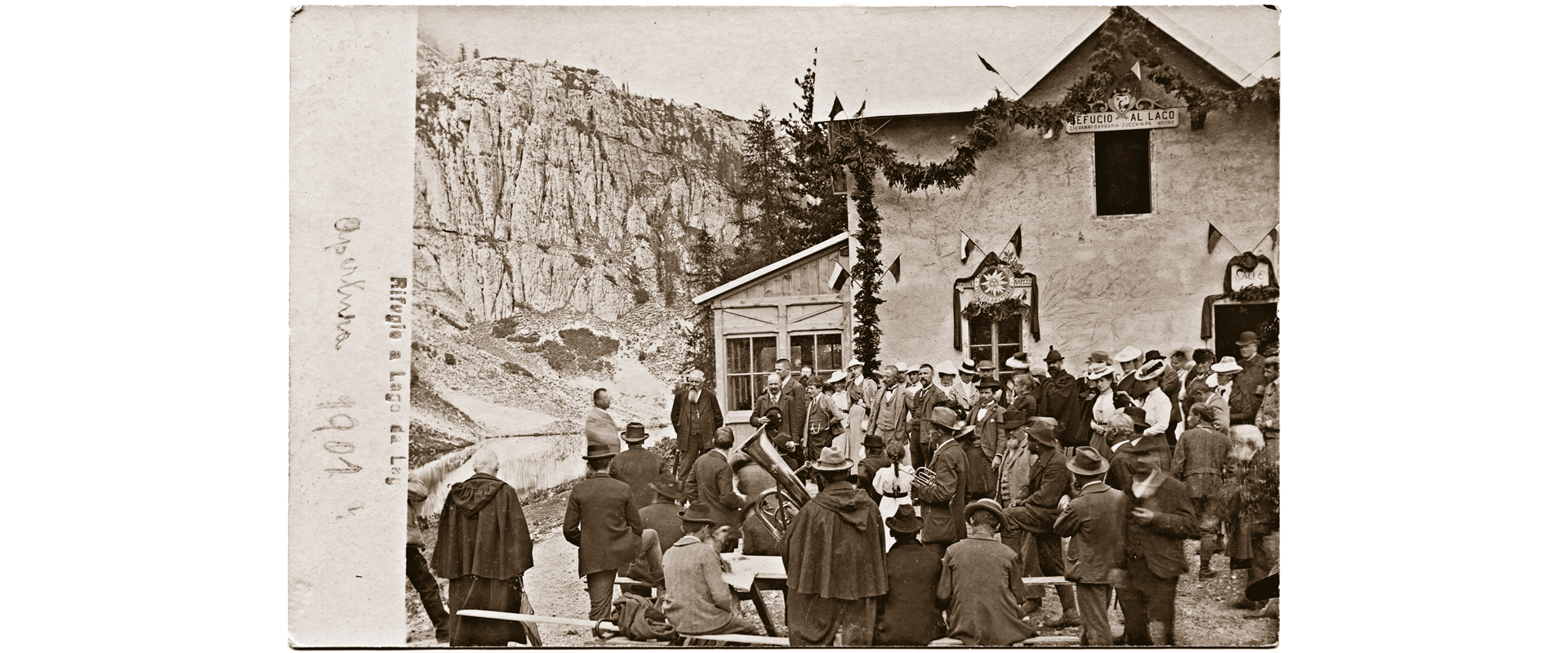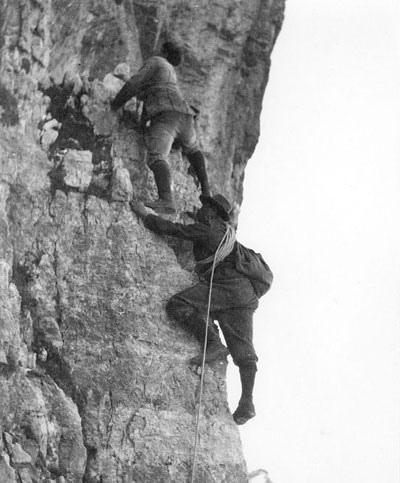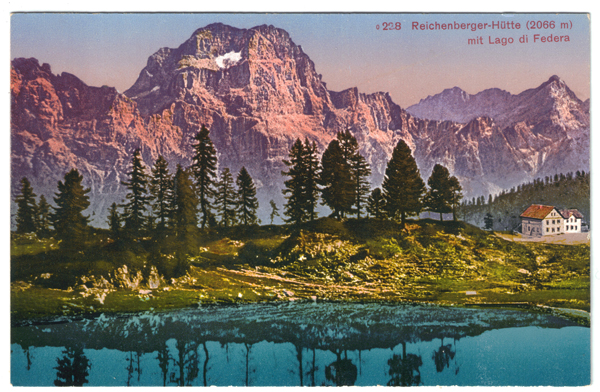
Rifugio Barbaria, inaugurazione 2.9.1901 © Tatiana Toscani

Rifugio Barbaria, inaugurazione 2.9.1901 © Tatiana Toscani

Since the early days of mountaineering, this area was the scene of adventurous undertakings.
Already in 1872, William E. Utterson Kelso made the first ascent of Mount Becco di Mezzodì with Santo Siorpaes; in 1884 Loránd Eötvös and Michel Innerkofler put up the Via Comune on Mt. Croda da Lago; in 1895 Leone Sinigaglia, Zaccaria Pompanin and Angelo Zangiacomi tackled the North Wall. On Mt. Becco di Mezzodì, in 1908 Bortolo Barbaria and Giuseppe Menardi put up the difficult route Camino Barbaria which later became a classic route.
After the construction of the refuge in 1901, and especially in the 1920s and 1930s, their daring successors could rest in a welcoming refuge.

Even if the refuge was well attended, it did not give the expected profits and thus, only 4 years later, the owner and hut keeper Giovanni Barbaria decided to put the building up for sale.
When the 200th section of the German and Austrian Alpine Club (D.u.Oe.A.V.) Reichenberg came to know that the Barbaria Refuge at Croda da Lago was up for sale, at the annual general meeting on January 11, 1905, the members decided the purchase unanimously.
D.u.Oe.A.V.-communication dated 1905: "After the completion of the construction work, on the ground floor of the refuge, there will be an entrance, a room for the hut keeper, a kitchen with adjoining cellar; the guest room will be considerably enlarged, panelled with stone pine wood; there will be a spacious veranda; upstairs, 4 bedrooms with 2 beds each and a dormitory with mattresses for 4-6 people will offer comfortable accommodation to 12-14 tourists ”.

Enlarged and renovated by the new owners with very modern furnishings for that time, the refuge was inaugurated in August 1905, renamed "Reichenberger-Hütte" and leased to Serafino Lacedelli and his wife.
The refuge was so well attended over the years, that the Alpine Club (D.u.Oe.A.V.) Reichenberg decided to enlarge it.
The opening ceremony was scheduled for August 22, 1914, but cancelled due to the outbreak of war and the refuge was closed at the end of July 1914.

When Italy entered the war in 1915, the entire Ampezzo valley was evacuated and the refuge abandoned.
After the Italian retreat on November 5, 1917, the refuge was plundered, but the building, fortunately, was not damaged.
Due to the territorial changes after the end of the war, the refuge Reichenberger-Hütte was expropriated and, in 1920, assigned to the Cortina section of the Italian Alpine Club (CAI), which changed its name to "Croda da Lago".
In 1923, it was reopened under the management of the couple Achille Toscani and Vittoria Zardini.
During the Second World War, in 1944, the refuge became a German garrison and was damaged.
It was reopened in 1946 and managed by Marcello Siorpaes, grandson of the famous mountaineer Santo Siorpaes, the conqueror of Mt. Becco di Mezzodì.

Following a contribution by the Palmieri family in memory of their son, a partisan commander awarded the Golden Medal of Honour, in 1948 the name "Gianni Palmieri" was added to the refuge’s name "Croda da Lago".
In 1994, the refuge was entrusted to the mountain guide and "Scoiattolo" Alverà Modesto, who is still managing it together with his wife Monica Molin and their children.